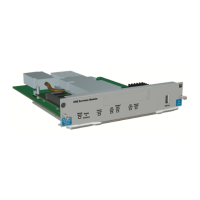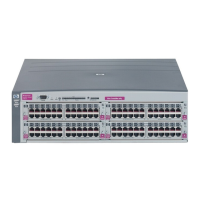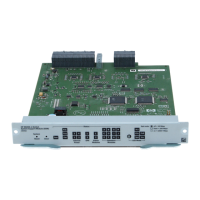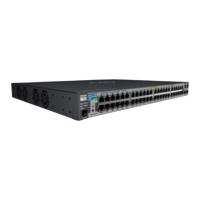priority of the outgoing packets is dened by the
Differentiated Services Codepoint mapping (see 'show qos
dscp-map'). Using 'no' removes any priority assignment for
this TCP/UDP service.
If MAX-TCP/UDP-PORT is specied then the priority is applied
to all TCP/UDP ports in the range from TCP/UDP-PORT to
MAX-TCP/UDP-PORT.
Supported Values:
■ udp-port -- Set UDP port based priority.
■ tcp-port -- Set TCP port based priority.
Next Available Options:
■ port-num -- TCP/UDP port from [to] which to prioritize traffic. (TCP/UDP-PORT) (p. 427)
■ range -- Specify range of TCP/UDP ports from [to] which to prioritize traffic.(p. 432)
■ ipv4 -- Specify range of TCP/UDP ports from [to] which to prioritize traffic.(p. 425)
■ ipv6 -- Specify range of TCP/UDP ports from [to] which to prioritize traffic.(p. 425)
■ ip-all -- Specify range of TCP/UDP ports from [to] which to prioritize traffic.(p. 424)
binary-codepoint
■ [no] qos type-of-service diff-services < 0 to 63 >
Specify the DSCP code-point in binary.
Range: < 0 to 63 >
Next Available Option:
■ dscp -- Define Differentiated Services Codepoint to which to map IP ToS.(p. 418)
binary-range
■ qos device-priority IP-ADDR dscp < 0 to 63 >
Specify the DSCP code-point in binary.
Range: < 0 to 63 >
■ qos device-priority IP-ADDR/mask-LENGTH dscp < 0 to 63 >
Specify the DSCP code-point in binary.
Range: < 0 to 63 >
■ qos device-priority IPV6-ADDR dscp < 0 to 63 >
Specify the DSCP code-point in binary.
Range: < 0 to 63 >
■ qos device-priority IPV6-ADDR/PREFIX-LEN dscp < 0 to 63 >
Specify the DSCP code-point in binary.
Range: < 0 to 63 >
■ [no] qos dscp-map < 0 to 63 >
Specify the DSCP code-point in binary.
Range: < 0 to 63 >
Next Available Options:
■ priority < 0 | 1 | 2 | ... > -- Specify priority to use. (p. 428)
416© 2009 Hewlett-Packard Development Company, L.P.
qosCommand Line Interface Reference Guide

